
This "Buddha Bowl" type dish has a main theme of Korean flavors but this meal is also a passport and an invitation to embark upon a pilgrimage with your senses to visit several different cultures. It includes region specific ingredients that invite your senses to explore the rich an illustrious culture of northern Japan, the lush and raw beauty of the Hawaiian islands, the plentiful jungles of southeast Asia, the fertile foothills of the Himalayas, the rugged and beautiful mountains of Patagonia as well as the mighty and majestic Great Lakes of Turtle Island (aka "North America".)
This dish includes 5 different ancient 'grains' from three continents and 4 different wild fermented probiotic ingredients with roots in 3 different cultures (including wild fermented turmeric, ginger, kimchi and adzuki bean miso paste).
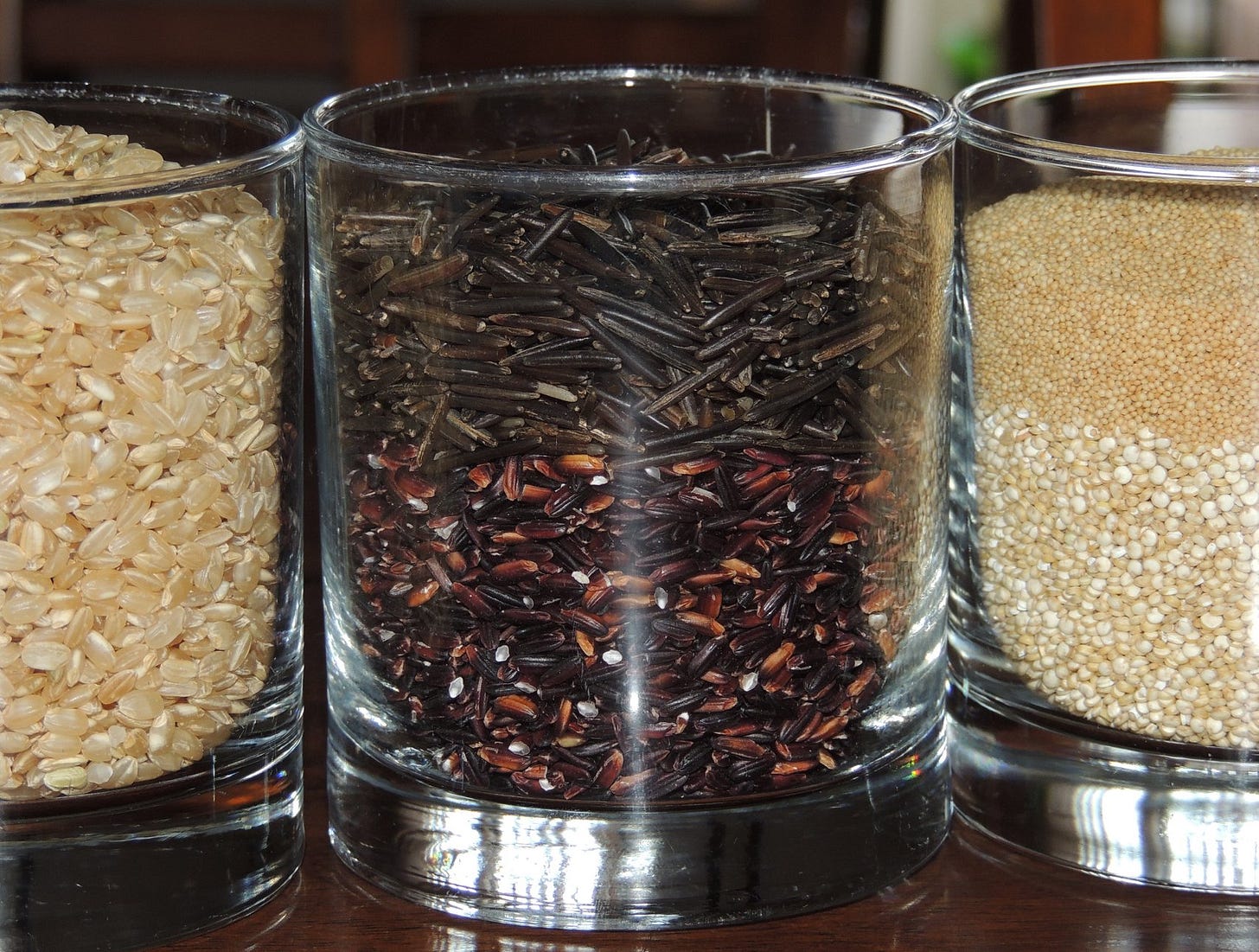
Containing a diverse range of antioxidants, vitamins, minerals, enzymes, omega fatty acids, beneficial bacteria and polyphenols this meal not only covers all the nutritional bases.. it hits a home run and sends the ball outa the park into the realm of medicinal superfoods.
Turmeric has a long history of being used to dye the robes of Buddhist monks a bright yellow/orange and so it felt it only suiting that I give a nod to their candescent curcumin cloths by including some in the recipe. Brightly colored raw fermented turmeric rhizome is included in both the probiotic roasted red pepper dressing and finely diced and sprinkled in the bowl as is.
The probiotic dressing is a variation of the Korean fermented pepper paste called Gochujang. It includes fermented roasted red peppers, roasted red onions, cayenne peppers, lemon zest, toasted sesame seeds, kimchi brine and adzuki bean miso paste. It is a living dressing with diverse nutrition in of itself which adds another layer of vibrant flavor and nourishing superfoods to the dish.
The great thing about this dish is you can make all the ingredients in bigger batches, place them in serving bowls and then everyone can custom make their own Bibim-Buddha Bowls (to a specific ratios and appearance of their preference.) This also allows one night of cooking to supply several nights of unique and delicious culinary experiences (as you can build your bowl uniquely with the left overs each subsequent night.
Origin of the "Buddha Bowl":
The tradition of mixing greens with a grain and a source of protein, along with condiments can be traced to many cultures, mainly in Asia and in Hawaii.
In the book called "Buddha's Diet", data scientist and Zen priest Dan Zigmond writes:
"Buddha woke up before dawn every morning and carried his bowl through the roads or paths wherever he was staying. Local people would place food in the bowl as a donation, and at the end he would eat whatever he had been given," explains Zigmond. "So that was the original Buddha Bowl: a big bowl of whatever food villagers had available and could afford to share. It was probably very healthy, since Buddha lived before the age of cheap processed food."
To this day Buddhist monks walk around with their bowls to be fill up with whatever people can give, therefore getting a varied selection of titbits in the process. The monks follow the example of Buddha who walked around with his bowl which got filled with whatever villagers could spare.
Buddhist monks are usually vegan or vegetarian depending on where they live and so making a "Buddha Bowl" type dish felt especially appropriate considering the special request that resulted in this recipe's inception. I also feel it is especially suiting this be the last recipe added to the book as Buddhist monks often give selflessly and show great respect and reverence for their fellow beings (human and non-human alike) and thus I feel this title is aligned with the spirit of Reciprocity.
In Korea there are Bibimbaps which consist of rice in a stone bowl, with a topping of greens and other veggies with an egg and/or slices of meat.
In Hawaii, the traditional Poke Bowl sees rice topped with fish and veggies and is a mainstream fare for quick lunches.
The 'Bibim-Buddha Bowl' combines all three of these traditions/concepts in a single distinctive sensory experience.
(my 5 Grain Bibim-Buddha Bowl (before adding the fermented red pepper dressing)
Ingredients:
- 1 cup brown short grain rice
- ½ cup wild rice
- ½ cup mahogany rice (or black rice)
- ½ cup amaranth seed
- ½ cup quinoa
- 1 avocado
- 2 eight oz (227g) packages of organic tempeh
- 2 cups of shiitake mushrooms
- 3 cups of spinach or kale
- 2 medium sized sweet potatoes
- 2 large bell peppers
- 1 bunch of green onions
- 2 red onions
- 2 white onions
- 4 tbsp fresh ginger, diced
- 3 tbsp soy sauce
- 2-3 tbsp diced fermented turmeric rhizome
- 2-3 zucchinis
- 1/2 cup mixed seaweed flakes (kelp, kombu, dashi, sugar kelp, nori etc)
- 2 medium-large carrots
- 2 cups green beans
- 2 cups purple cabbage, thinly sliced
- 3 tbsp organic dark miso paste
- Juice of one lemon
- Black pepper (to taste)
- hot sauce to taste
- 2-3 tbsp maple syrup
- 1 tsp sesame seed oil
- 1-2 tbsp olive oil
- 2-3 tbsp raw honey (more to taste)
- 1-2 fermented hot peppers (or 1 tbsp red chili flakes)
- 1 cup of kimchi (and some brine)
Preparation:
Begin the night (or morning) before making this meal by soaking all the grains (rice, amaranth and quinoa) in filtered water with enough water to cover by at least an inch for expansion. Soak the rice separately from the quinoa and amaranth and also keep the dark colored rice separate from the lighter colored brown rice.
Also begin making the fermented red pepper dressing the night before. Start by roasting 1-2 red onions 1 large bell pepper at 350 until they begin to get crispy edges. Allow to cool and then add to a blender with 2 tbsp miso paste, 1tbsp finely diced seaweed, 1 tbsp raw honey, 1 tbsp ginger, ½ the lemon juice, some black pepper, the fermented hot pepper (or some brine from any fermented veggies and the pepper flakes).
Add 1 tbsp fermented turmeric (or I tsp powdered) and a tbsp or 2 of kimchi brine and blend until smooth.. allow to ferment in a loosely covered container at room temp for 4-24 hours (depending on flavor preference) before using.
Prepare the marinade for the tempeh by adding the soy sauce, 1 tbsp of honey, 3 tbsp diced ginger, 1 tbsp miso paste, the other half of the lemon juice, 1 tbsp diced seaweed, black pepper, the sesame seed oil, a splash of hot sauce, the maple syrup and 2-3 tbsp of diced red onions. Taste the marinade and if it needs some more kick add hot sauce, if it need some more tang add more lemon, if it has too much zang add more honey or maple syrup. Once ideal flavor is achieved take one quarter of this marinade mixture and set aside.
Begin by cooking the rice and grains (according the the instructions on the packages). For home grown amaranth just cook it like you would quinoa. Add some coconut oil to each while cooking. Set the oven to 350 and cut up the sweet potato and an onion into big chunks. Add some coconut oil and cover the pieces. While that is roasting cut the tempeh rectangles in half down the length and then cut those halves at an angle to make 4 squares. Add these squares to a large bowl and throw the reserved ¼ of the marinade and be sure to cover all the tempeh triangles with some of the marinade. Heat up a medium pot with an inch of water in the bottom and add the tempeh triangles into a metal colander/sieve suspended over the boiling water and place a lid over top to steam them for 5-10 minutes. Once they are steamed take them out and add the rest of the marinade to the large bowl, cover the tempeh triangles in the marinade and then place on a baking tray and put in the oven in a different tray than your sweet potatoes. Slice your zucchini into thick chunks and drizzle with olive oil, place on a baking tray and sprinkle with some black pepper and add those to the oven to begin roasting as well.
After the sweet potatoes and onion have baked for 30 min or so check to see if they are cooked through and remove once they are (setting aside to cool).
Clean and cut your shiitake mushrooms into nice thick bite sized slices and sauté with some oil, seaweed and black pepper until tender, remove from heat and set aside. Check on the tempeh and zucchinis regularly to see if they are done. Zucchinis should be tender inside and tempeh should be crispy around the edges. Once done remove all items from the oven and set aside while you prepare the other ingredients.
Cut the carrots into thick slices and green beans into bite sized pieces and boil separately so they are cooked but not mushy, drain and set aside.
Cut up the avocado, spinach, green onions, roasted sweet potato and red cabbage into bite sized peices and put in serving bowls (that can be accessed for building people’s individual bibim-buddha bowls.) Add the kimchi to a serving bowl. Add the different types of rice to separate serving bowls and the amaranth/quinoa mix to another. Put some of the fermented red pepper sauce in a bowl for easy access and let the fun begin!
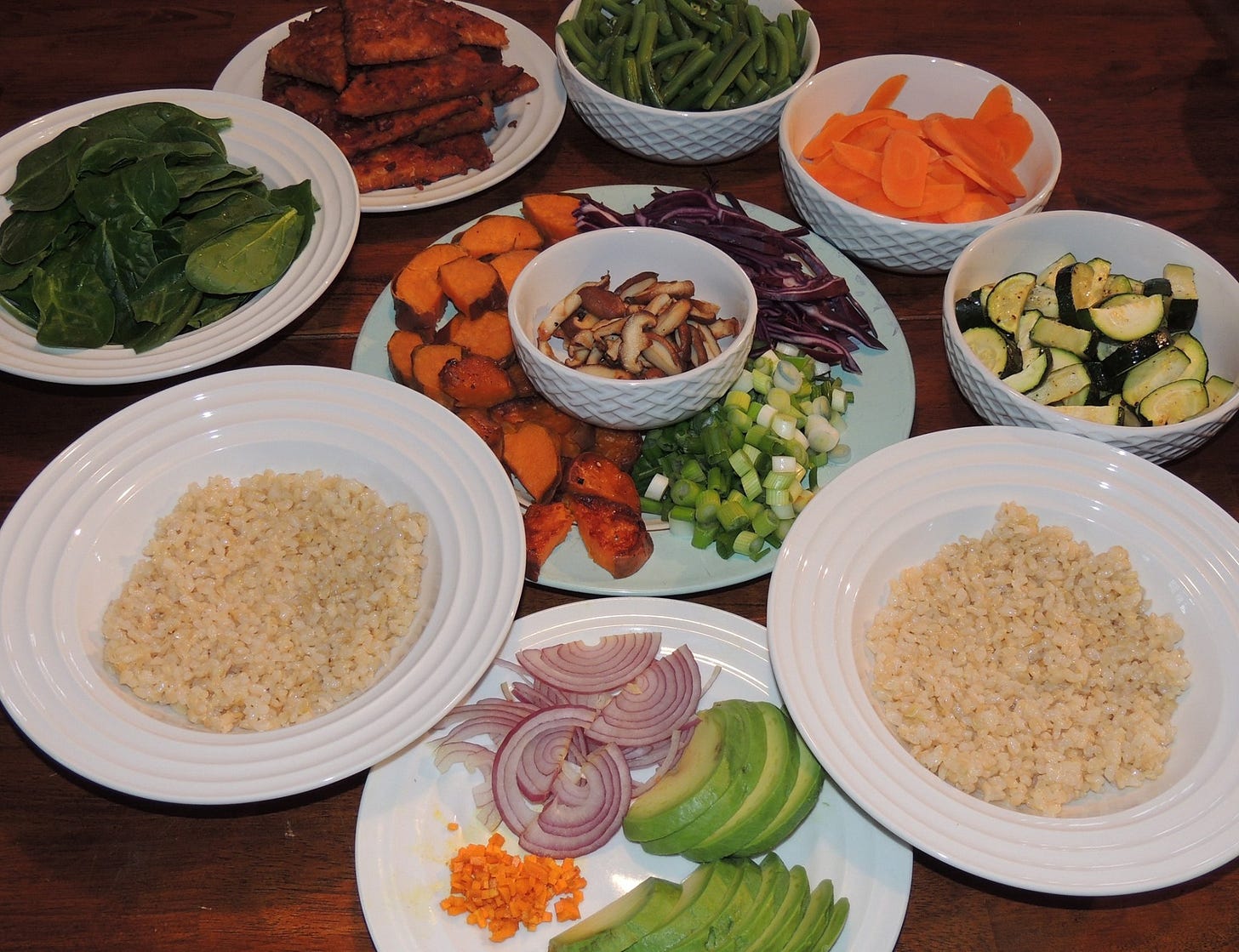
Check to see if any ingredients need to be re-heated before serving and then begin by adding a layer of brown rice to the bottom of a large bowl and giving to each person. Invite people to build their own custom Bibbim-buddha bowls and watch the magic happen! Enjoy!
Recipes For Reciprocity Printing Process Update:
The first few books I had expedite shipped to me (for inspecting and sharing with family and friends) arrived fresh off the presses and they look great!
Here are some pics of the final version of my book fresh off the presses:
I will post another update when the bulk shipment of books arrives and I can begin shipping out physical copies to those interested in purchasing a copy.
I hope you enjoy the above recipe and I look forward to hearing from those of you that attempt to make your own versions of the recipe to hear how it goes for you :)





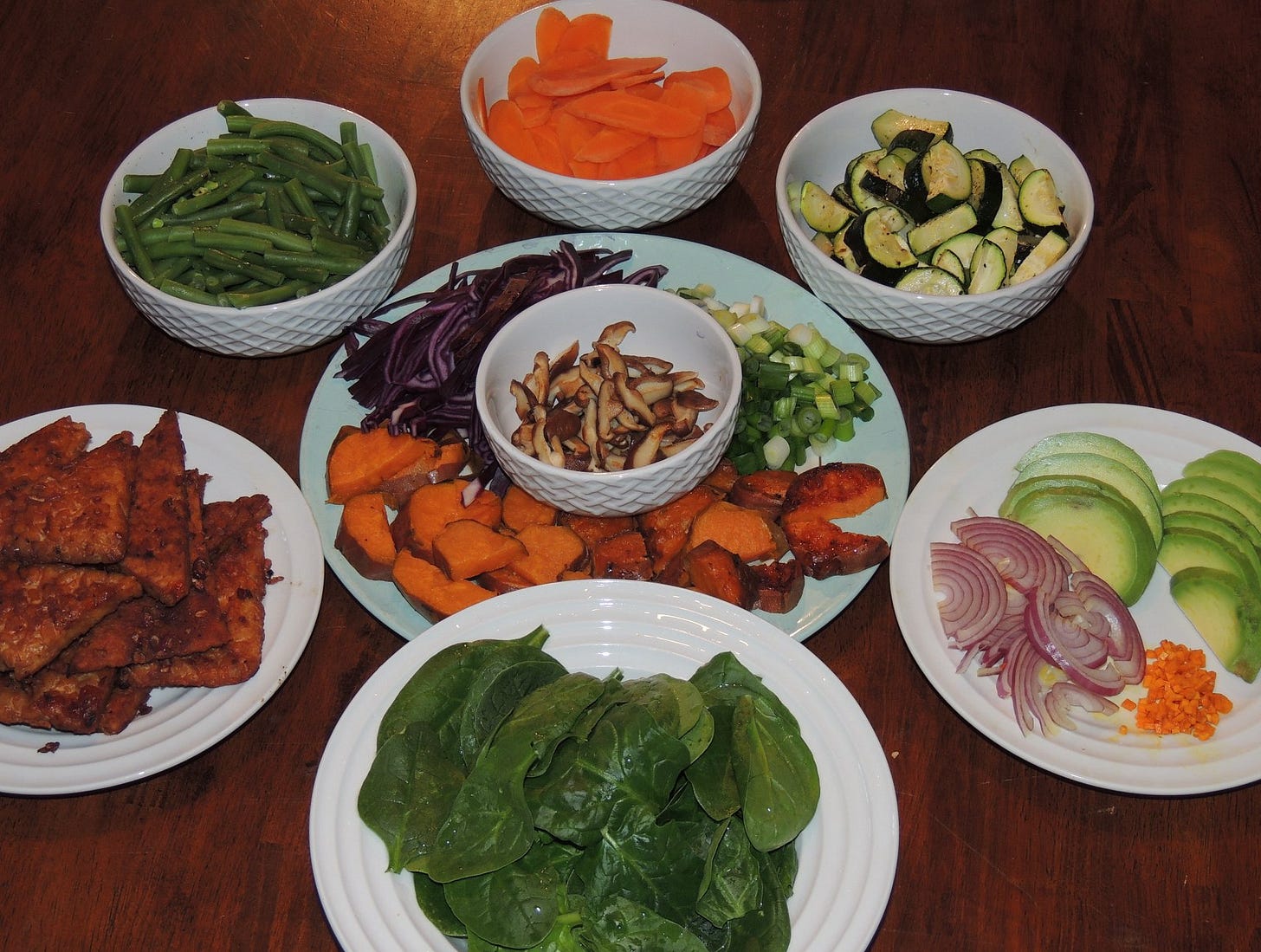
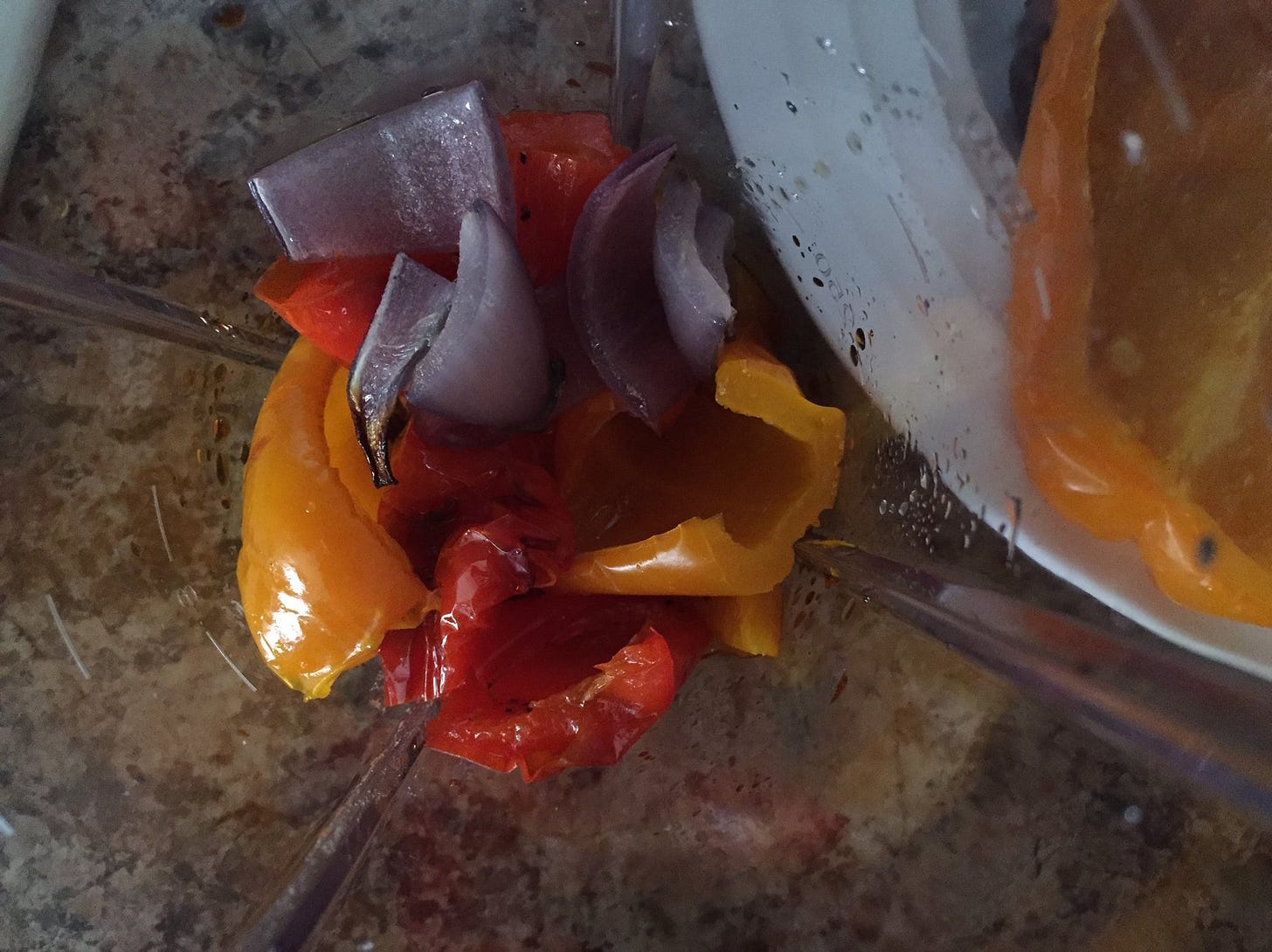

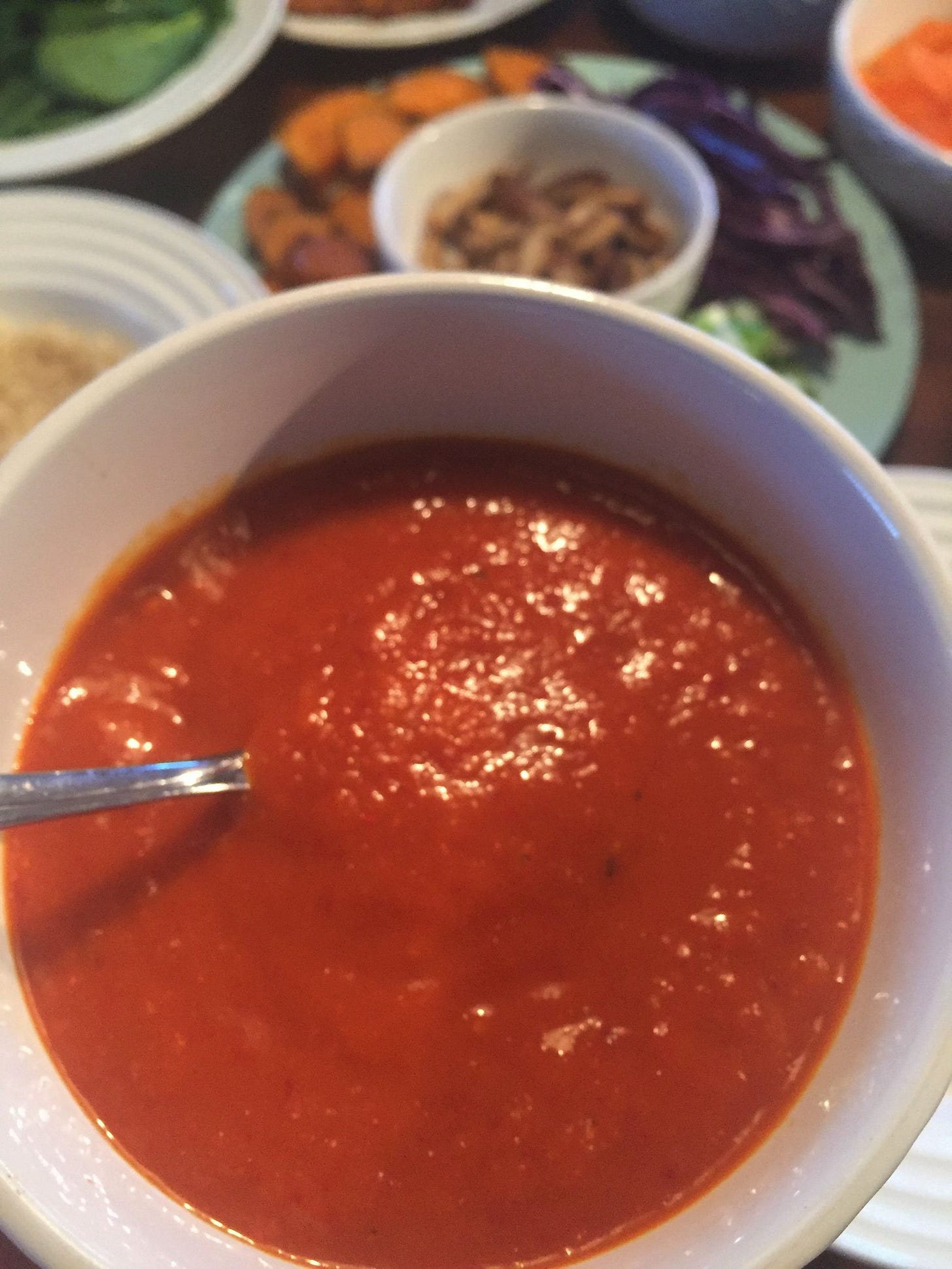
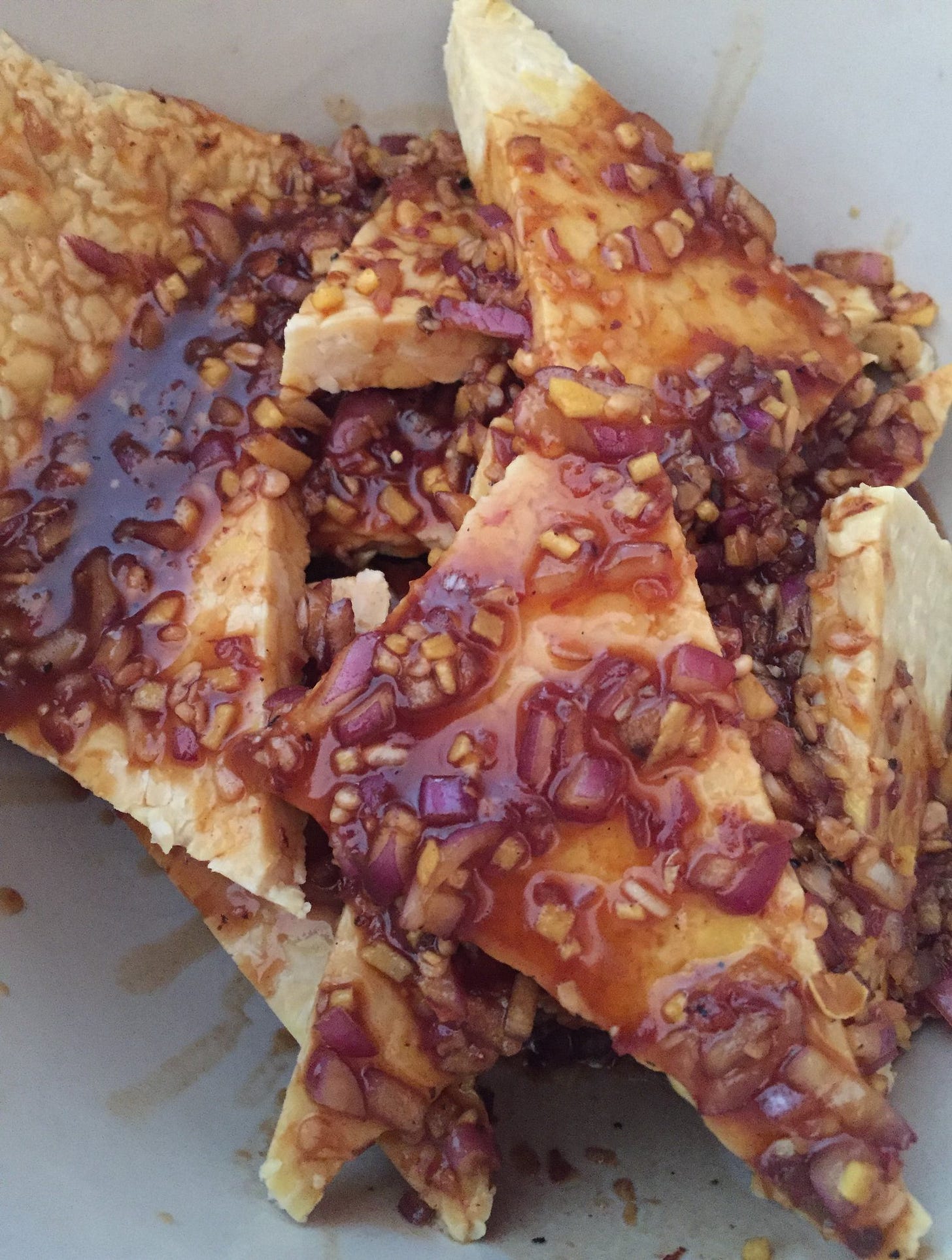
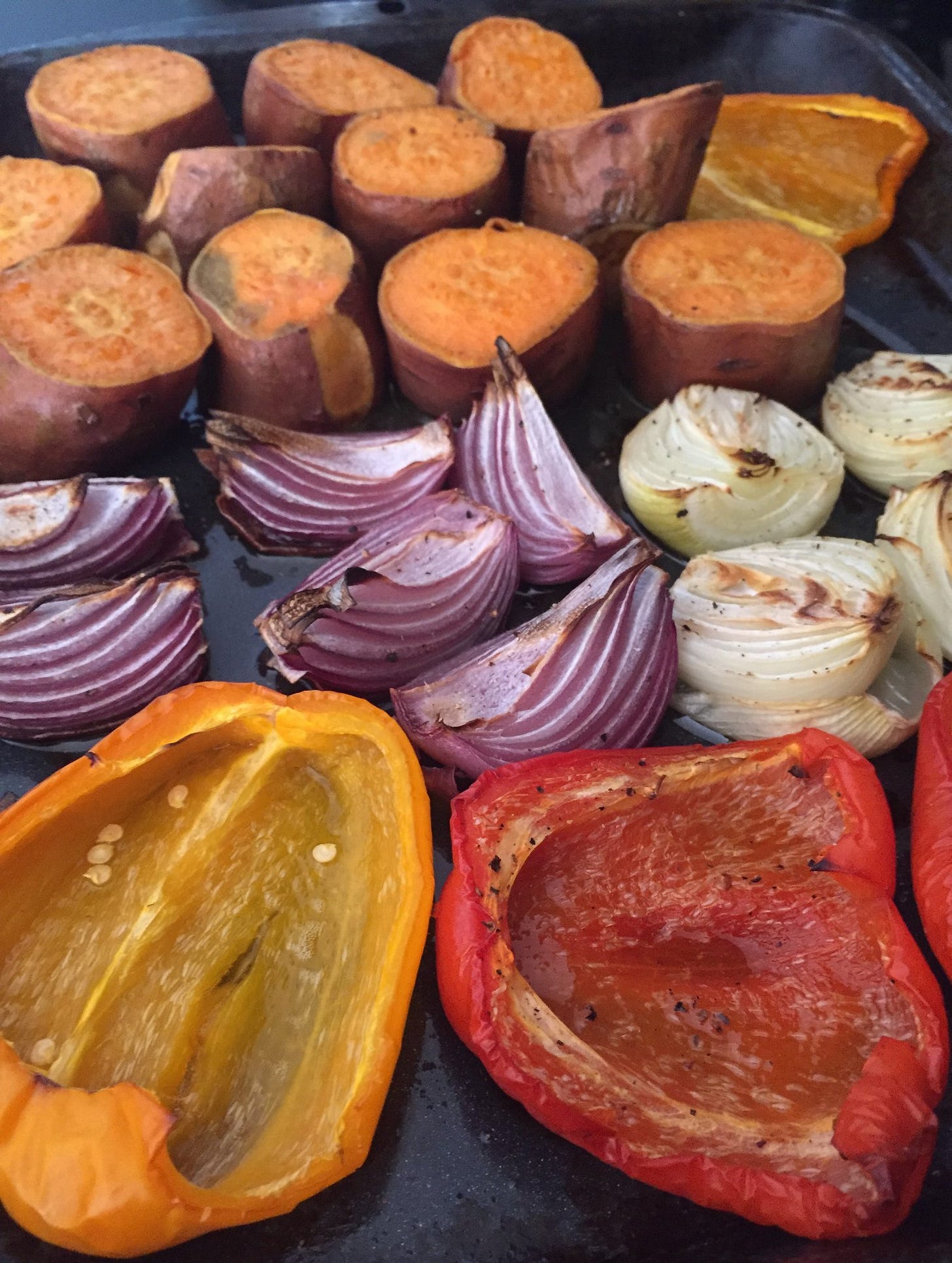


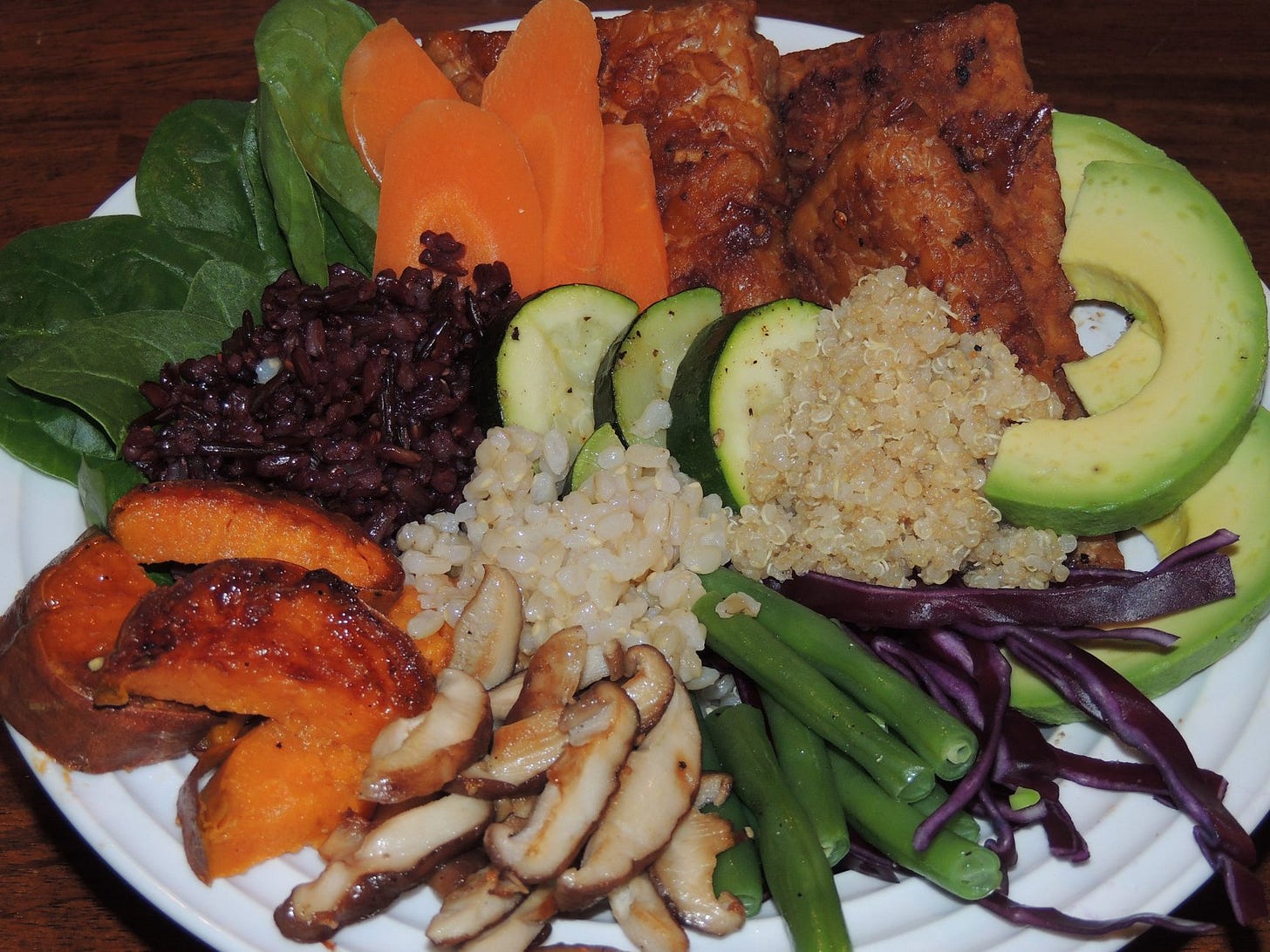
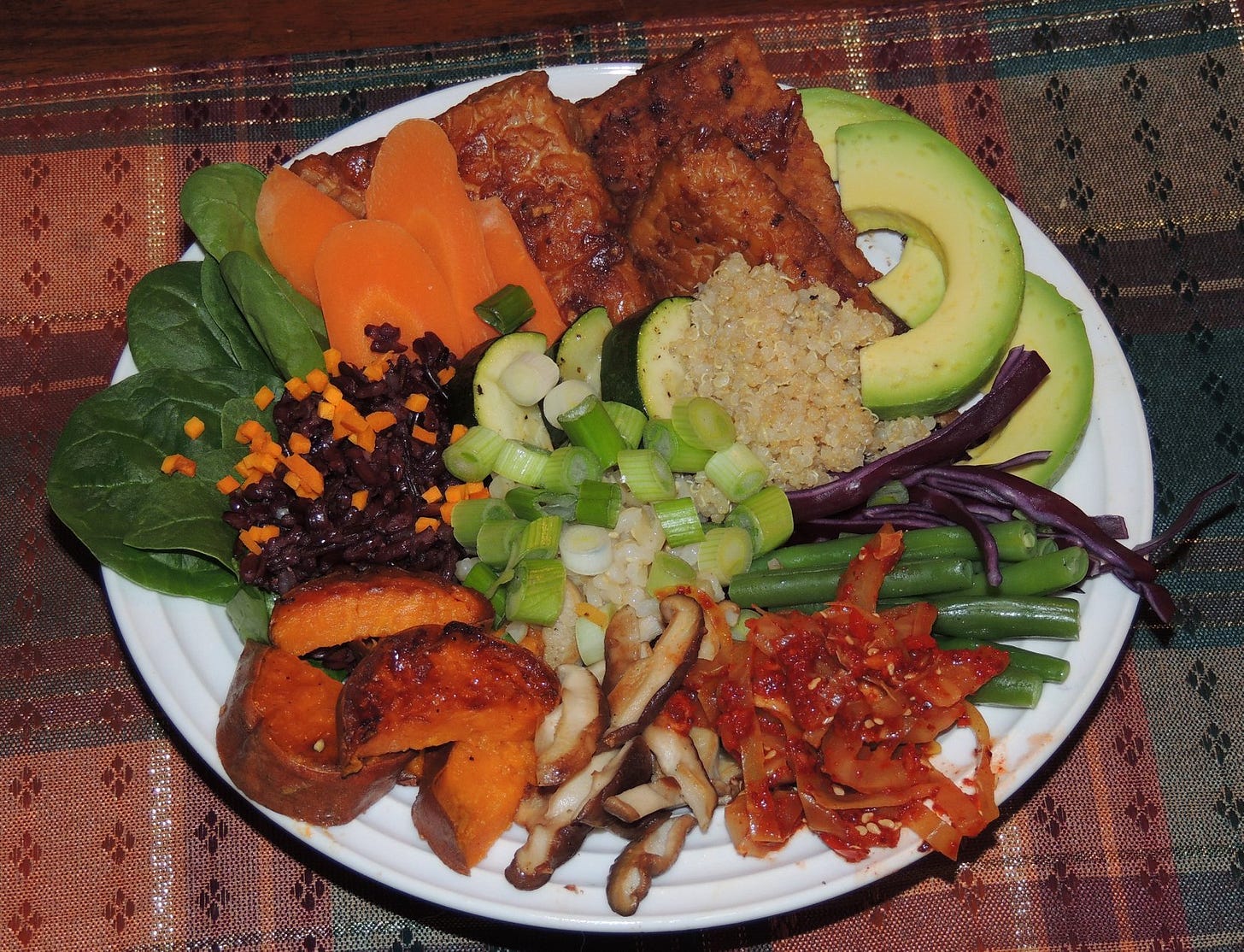
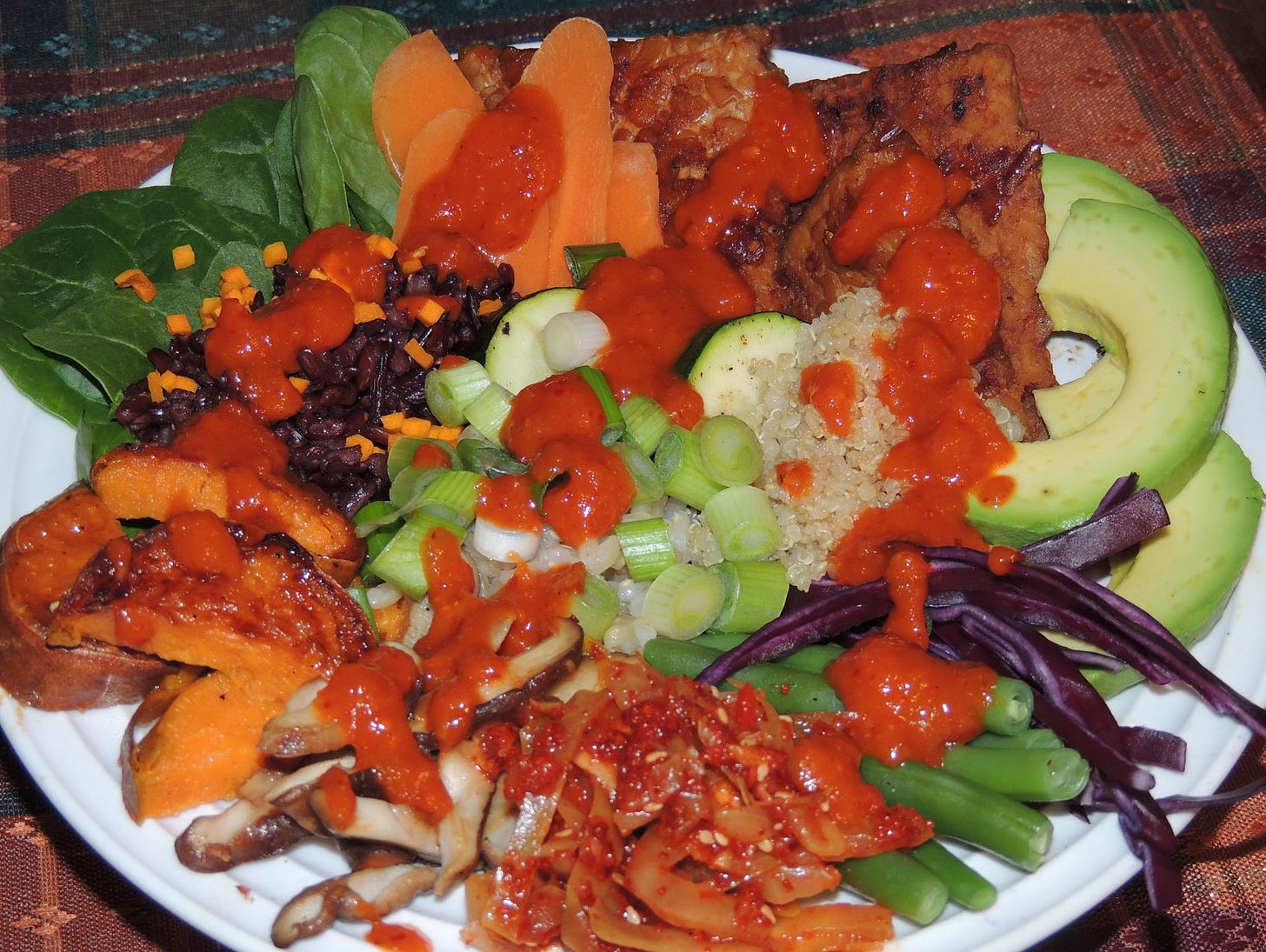
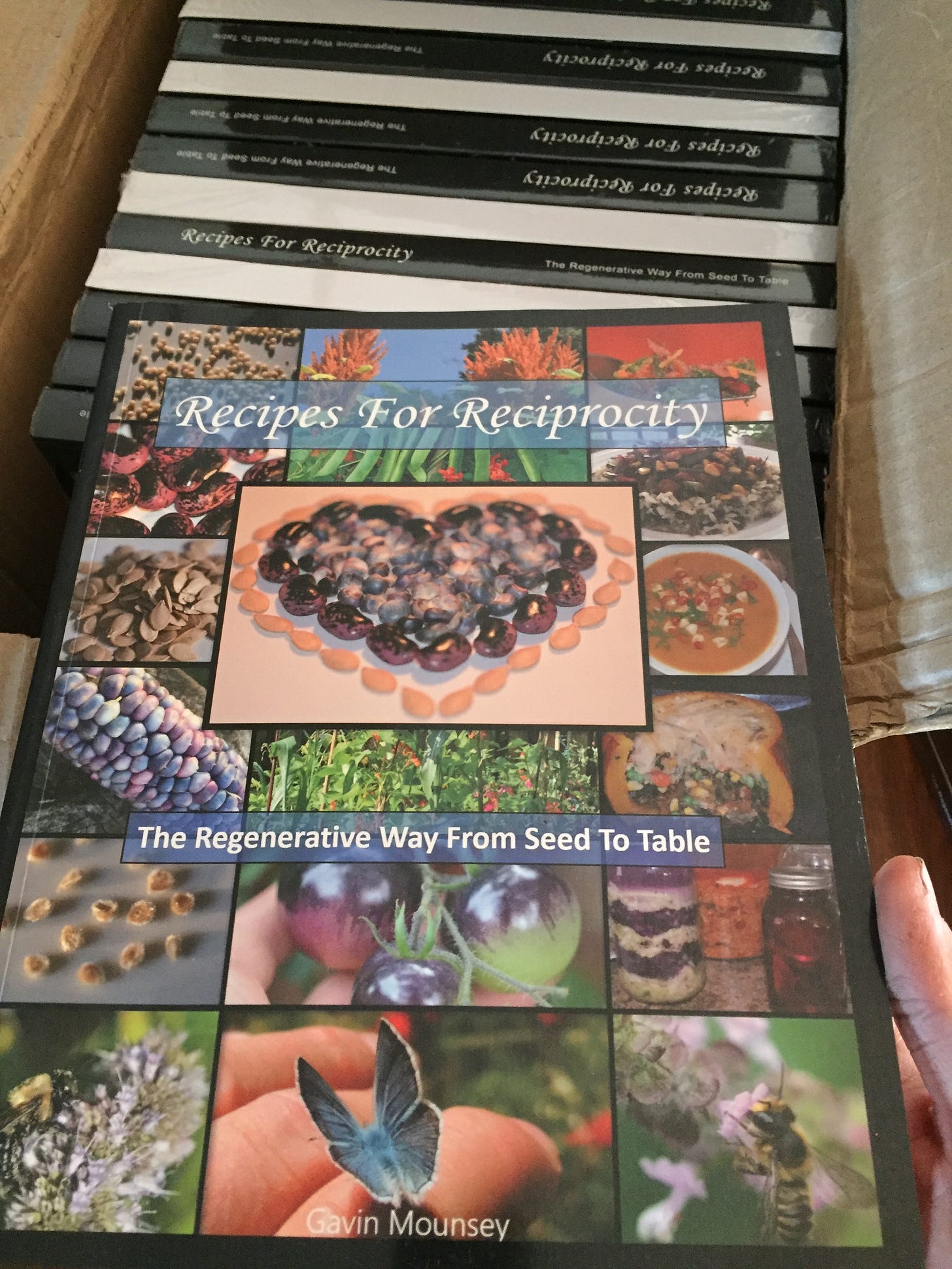
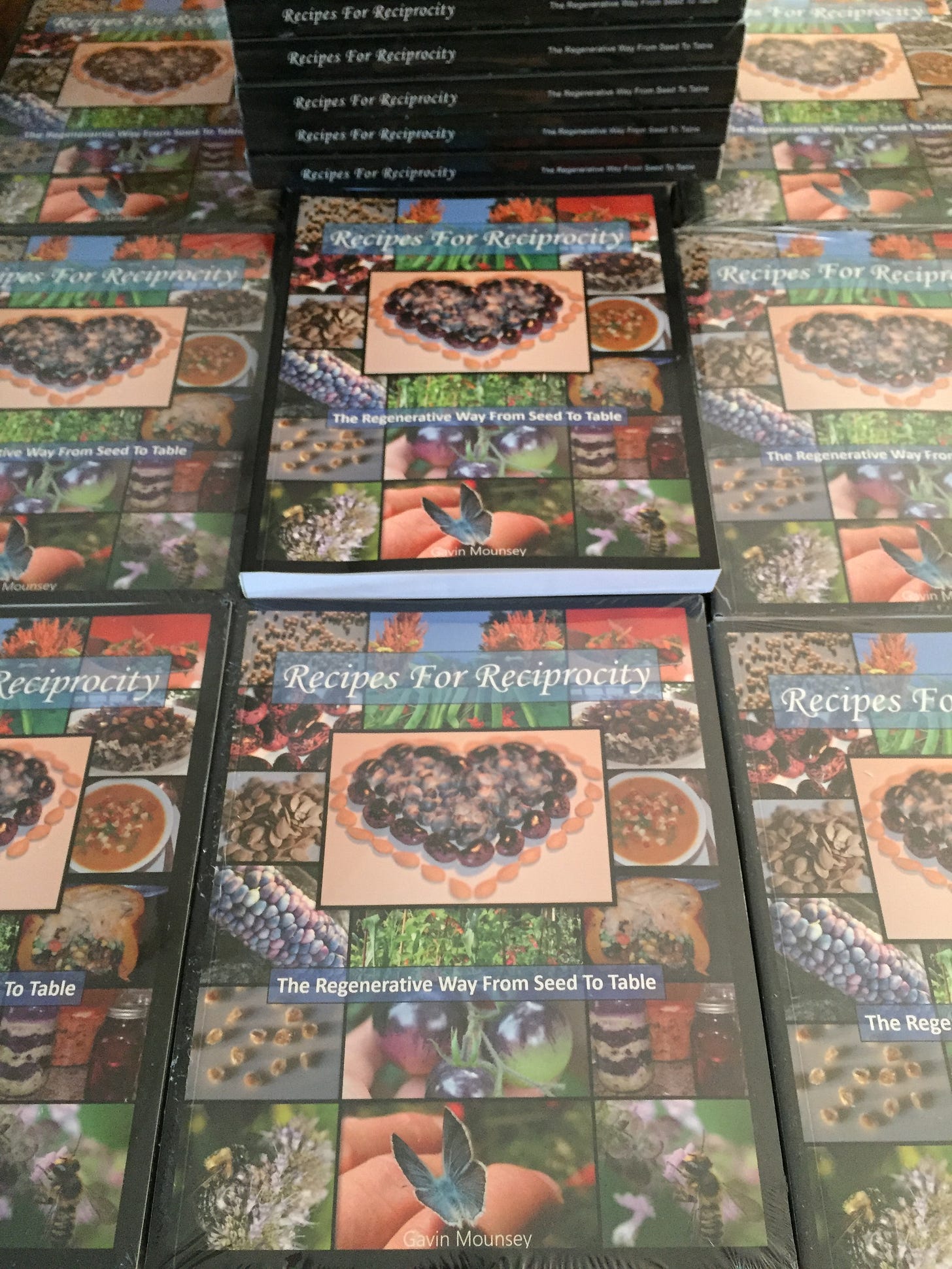


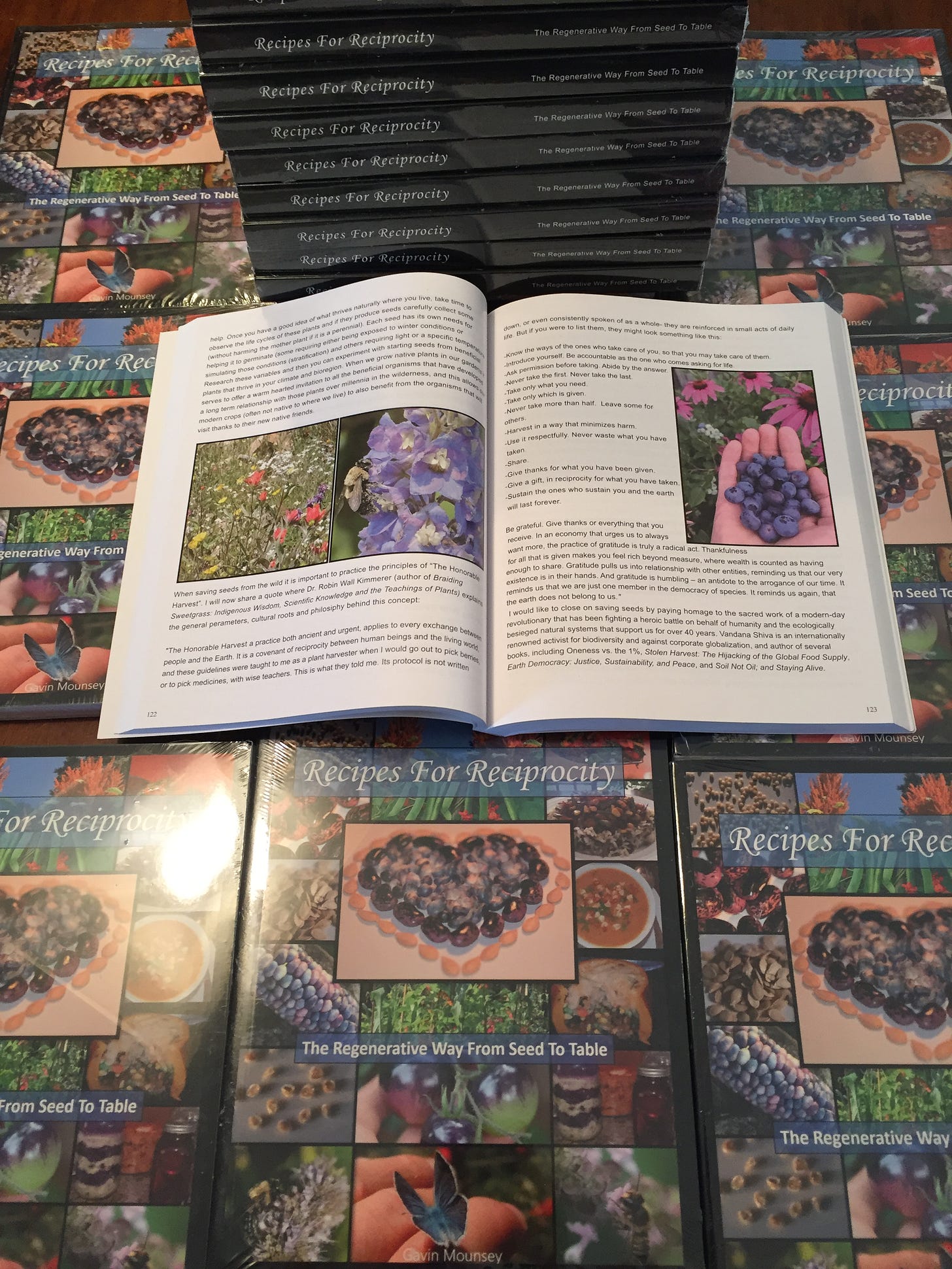
Well Gavin,in my present condition it'd take me a year to prepare and figure it out.....but,that is likely the Most Beautiful Salad and Presentation I've ever seen! Just Wonderful!
Ah, now I am hungry! That looks really good.